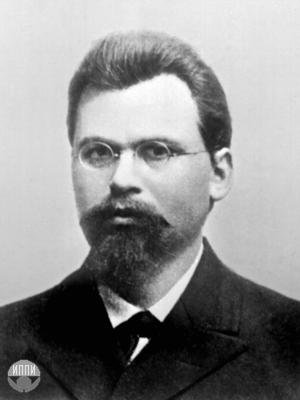<Back to Index>
- Mathematician Georgy Feodosevich Voronoy, 1868
- Writer Karl Kraus, 1874
- Dictator of Portugal António de Oliveira Salazar, 1889
PAGE SPONSOR

Georgy Feodosevich Voronoy (Ukrainian: Георгій Феодосійович Вороний ;Russian: Гео́ргий Феодо́сьевич Вороно́й; 28 April 1868 – 20 November 1908) was a famous Russian mathematician. Among other things, he defined the Voronoi diagram.
Voronoy was born in the village of Zhuravki, district of Pyriatin, in Chernigov Governorate of the Russian Empire (now Varvins'ky region, Poltava Oblast, Ukraine).
From 1889 on Voronoy studied at Saint Petersburg University, where he was a student of Andrey Markov. In 1894 he defended his master's thesis, titled About algebraic integers depending on the roots of an equation of third degree. In the same year Voronoy became professor at the University of Warsaw, where he worked on continued fractions. In 1897 he defended his doctoral dissertation, titled About a generalisation of a continuous fraction.
Voronoy
died after a severe disease in his home village, on November 20, 1908. Among his
students were Boris
Delaunay (Ph.D. at Kiev
University), and Wacław
Sierpiński (Ph.D. at Jagiellonian
University in 1906). In 2008
Ukraine released two-hryvnia coins commemorating the
centenary of Voronoy's death.